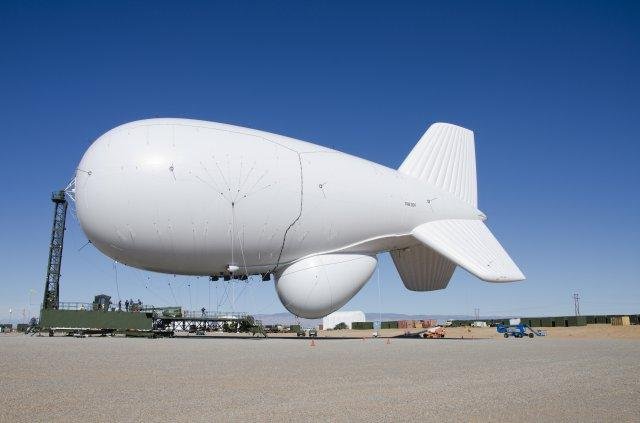Ratheon's JLENS system, which is radar mounted on a blimp. (U.S. Army photo)
TEWKSBURY, Mass., June 25 (UPI) -- Raytheon has announced its blimp-borne radar previously used for testing is now available for operational deployment as a strategic asset.
The system is called JLENS -- or Joint Land Attack Cruise Missile Defense Elevated Netted Sensor System -- which is composed of an integrated radar system on two tethered, 80-yard aerostats.
The aerostats fly at altitudes of 10,000 feet above sea level and remain aloft and operational for 30 days, enabling the use of defensive measures against cruise missiles, low-flying manned and unmanned aircraft, and moving surface vehicles such as boats, mobile missile launchers and tanks.
Threats can be detected from as far as 340 miles away.
Raytheon said the system can also detect tactical ballistic missiles and large-caliber rockets in their ascent phase.
The U.S. Army has acquired two JLENS systems – one is undergoing operational evaluation and one is being held in reserve, Raytheon said.
"By putting JLENS in strategic reserve, the Army is giving combatant commanders around the globe the ability to pick up the phone and, in short order, receive this incredible air defense capability in their area of responsibility," said Raytheon's Dave Gulla, vice president of Integrated Defense Systems' Global Integrated Sensors business area.
Development of JLENS started in 2005. In testing, it has tracked and targeted aircraft and helped destroy cruise missile targets with its integration with the Patriot Air and Missile Defense System, Standard Missile 6 system and AMRAAM defensive systems.
"JLENS has proven its ability to extend the air-defense umbrella by integrating with our nation's land-, sea-, and air-based air defenses to detect and intercept threats, such as airplanes, drones and cruise missiles," said Doug Burgess, Raytheon's JLENS program director. "The success of this operational evaluation is another significant step forward because it will demonstrate that JLENS has unmatched defensive capabilities.















